It is recommended that you try practicing these techniques with some of the featured decks after you finish reading.
The Practice and Chronicles modes found under Single in the main menu are ideal for this.
Once you think you’ve gotten the hang of it, mix in some new cards from packs to create your very own decks and try them out in Ranked Matches!
In the previous article “Learn Each Hero’s Play Style 1”, we introduced Ryu and X’s play styles.
In this second article, let’s learn the play styles of the purple elemental Hero Morrigan Aensland, and the black elemental Hero, Albert Wesker.
Summary
- Morrigan Aensland excels at using Halt and other various effects to disrupt your opponent
- Albert Wesker excels at the destruction of enemy units and the rebirth (using the <Revenge> ability and returning cards from the graveyard) of friendly units
Article Index
- 1. Morrigan Aensland’s Basic Deck
- 2. Morrigan Aensland’s Basic Play Style
- 3. Choosing Your Starting Hand (Morrigan Aensland)
- 4. A Tidbit of Advice to Win With Morrigan Aensland
- 5. Albert Wesker’s Basic Deck
- 6. Albert Wesker’s Basic Play Style
- 7. Choosing Your Starting Hand (Albert Wesker)
- 8. A Tidbit of Advice to Win With Albert Wesker
1. Morrigan Aensland’s Basic Deck
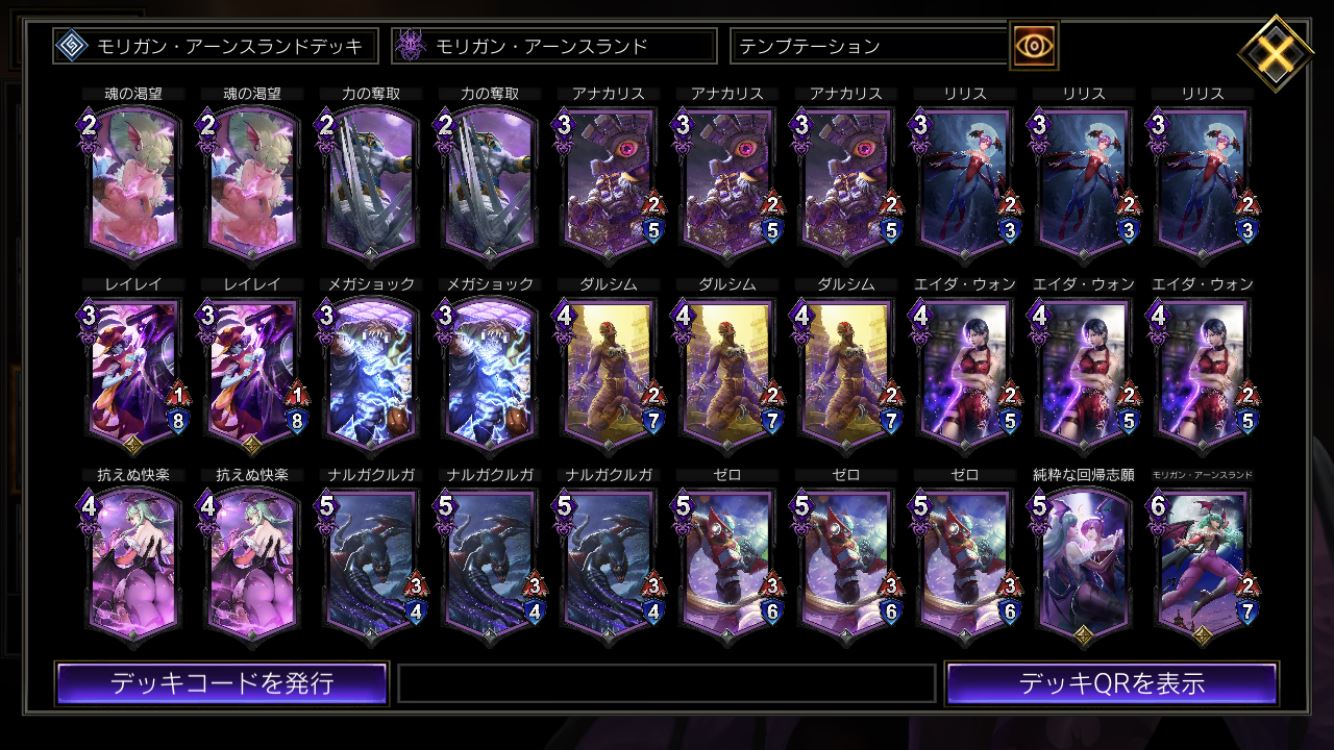
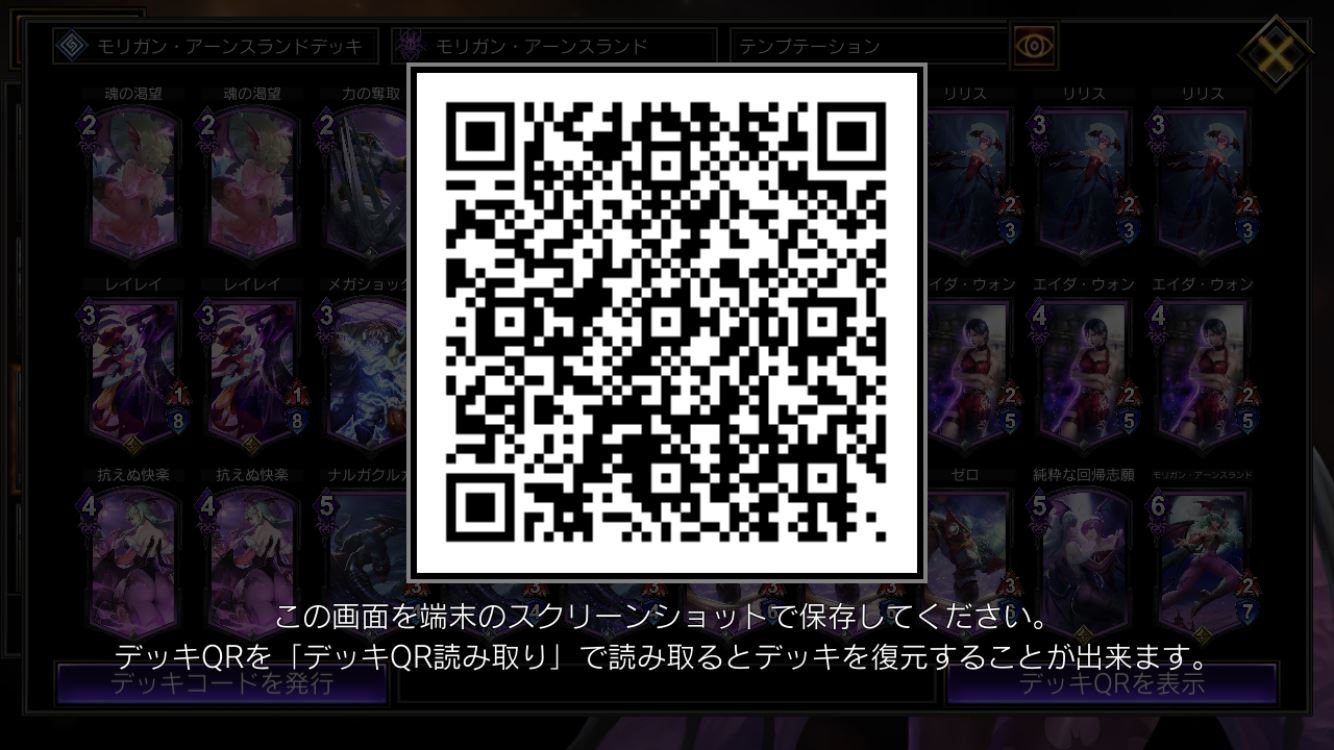
The Morrigan Aensland deck we’ll be using in this article is shown above along with its Deck QR.
This deck exclusively uses Basic Cards, so all players can replicate it in-game simply by scanning the accompanying Deck QR.
It’s recommended that you take a few minutes to familiarize yourself with the cards in the deck and the details of Morrigan Aensland’s Hero Art before proceeding.
2. Morrigan Aensland’s Basic Play Style
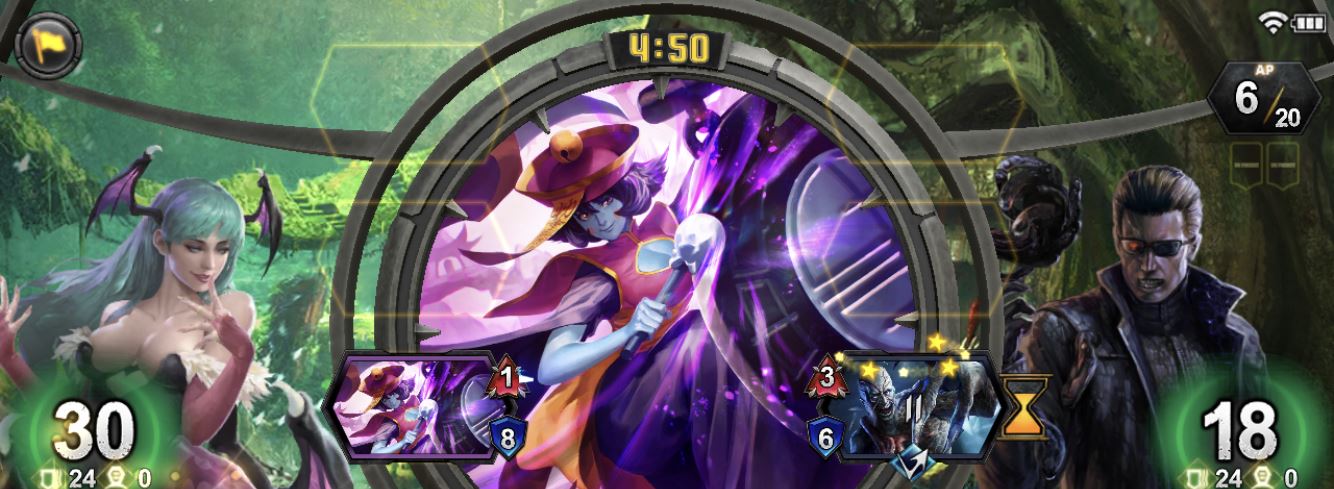
Morrigan Aensland is a Hero that toys with her enemy before seizing victory. She utilizes tactics such as halting her enemy’s units with her Hero Art Temptation to open up her path towards victory. Her basic deck has many cards that inflict Halt onto enemy units.
Enemy units inflicted with Halt cannot attack or counter, so your units can inflict damage with no worries.
Inflict Halt onto the enemy
↓
Destroy the powerless units by attacking them
↓
Attack the defenseless Hero. This is what your basic game plan looks like.
See below for examples of cards to use:
▼ Learn the ins and outs of using Halt!
Halt’s effects are a little complicated, so you’ll need to get used to them to maximize their effectiveness.
Let’s look at the following points.
- While halted, the target will be unable to attack or counter.
- If the target were to be attacked, they will not counter, and their attack gauge cannot be reset.
For a more detailed explanation of the mechanics of unit battles, counters, and the attack gauge, please refer to Tips and Tricks (Basic Knowledge).
[Unit Cards That Inflict Halt Onto Enemy Units]
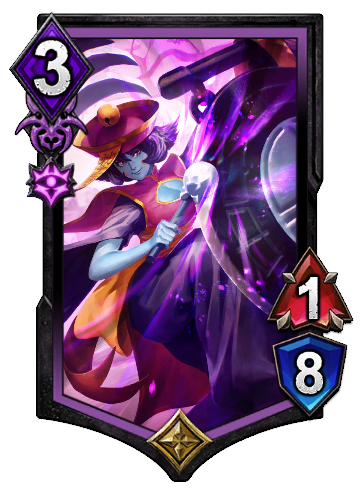
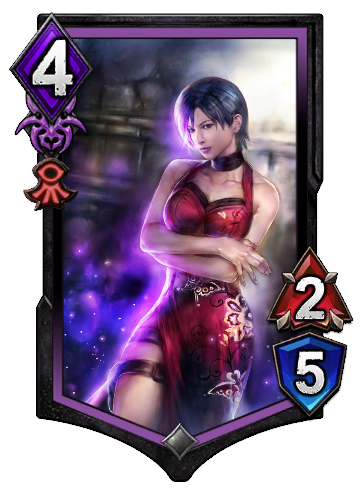
There are 2 unit cards in Morrigan Aensland’s basic deck that can inflict Halt onto enemies.
“Hsien-Ko (MORRIGAN 007)” inflicts Halt to a random enemy unit when played, and “Ada Wong (MORRIGAN 004)” inflicts Halt when it dies to the unit in front.
The trigger conditions and the targets of both cards have particularities about them, so you’ll need to figure out the right timing to play them.
Here’s an example you can reference when playing this deck.
Using Halt to Seize the Advantage in Combat
Let’s say that “Zero (MORRIGAN 006)” and “Hunter (WESKER 005)” are about to battle.
Both of their HP and Attack are exactly the same, so the results of combat should be a draw, but let’s look at how using Halt can affect this situation.
1. As soon as your friendly unit’s attack gauge is about to fill…


2. Play “Hsien-Ko (MORRIGAN 007),” and inflict Halt onto the enemy.


3. Since the enemy cannot counter, your friendly unit can deal damage without any repercussions.

Even though it’s supposed to be a draw, by inflicting Halt onto the enemy unit, your unit will be the one left standing.
Inflicting Halt onto enemy units and controlling the flow of combat between units is the trick to using Morrigan Aensland effectively.
In this case, since there was only one enemy unit on the field, “Hsien-Ko (MORRIGAN 007)” was guaranteed to inflict Halt onto it, but if there are 2 or more enemy units on the field, then the enemy will be chosen at random so the right timing is required.
In cases where there are many enemies on the field, it’s best to use cards appropriate for the situation, such as action cards that inflict Halt individually.
[Action Cards That Inflict Halt Onto Enemy Units]
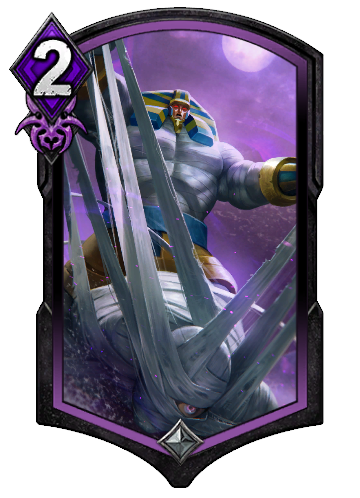
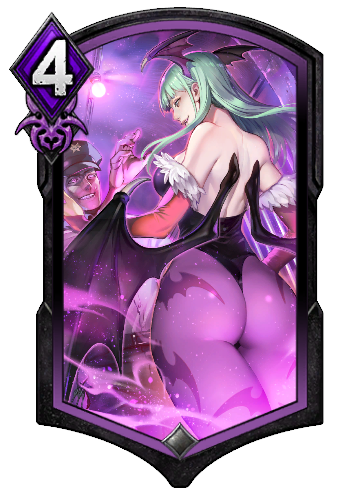
Action cards that inflict Halt onto enemy units generally inflict Halt onto 1 designated unit.
It’s also possible to use them during Active Response, making it a very powerful card.
▼ The Hero Art Temptation Inflicts Halt on All Units!
The effect also lasts a long time, so while they are halted, use your units to destroy them.
There are also Action Cards that deal great damage to halted units, so it might be good to use those cards as well.
[Traits of Action Cards That Deal Damage to Units]
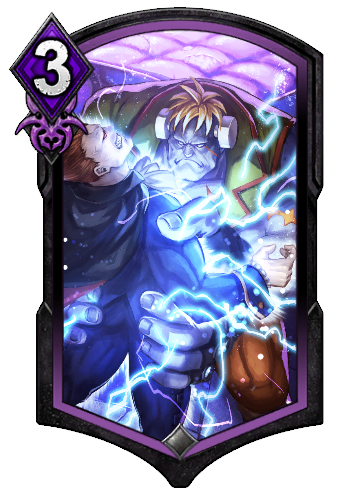
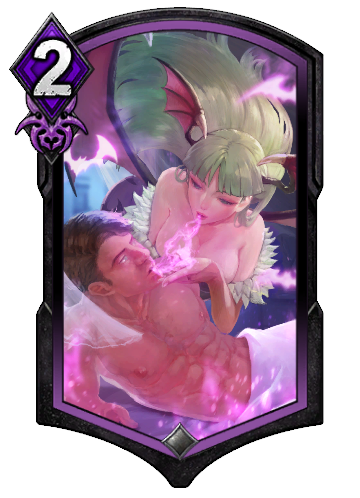

Morrigan Aensland’s basic deck also contains cards that deal damage directly to enemy units.
Cards like “Soul Thirst (MORRIGAN 009)” and “Will to Unite (MORRIGAN 013)” deal damage to enemy units as well as restore Life to your Hero, making them very handy.
You can also use them when your Life is low even if you don’t intend to destroy the enemy unit just to get out of sticky situations.
Also, you can deal 6 damage instantly to all units with Halt by playing the card, “Mega Shock (MORRIGAN 011)”.
By combining it with her Hero Art, Temptation, it’s possible to clear the enemy’s field in one go, so wait for your opponent to have multiple units on the field to maximize its value.
▼ Shadow Blade is a Hero Art That Combines Offense and Defense!
Compared to her other Hero Arts, Shadow Blade doesn’t have much complexity to it, so if you have trouble deciding on one, go with Shadow Blade.
Furthermore, it’s more effective when used against units with <Flight>.
It’s best to use it on troublesome units or units with <Flight>.
3. Choosing Your Starting Hand (Morrigan Aensland)

You cannot defeat enemy units with just Halt, so you’ll need strong units to directly attack them.
It’s good to have at least one of either “Anakaris (MORRIGAN 001)” or “Zero (MORRIGAN 006)” in your starting hand as they have a good balance between HP and Attack for their MP cost.
Also, having “Mega Shock (MORRIGAN 011)” in your hand can change the flow of battle in an instant, so if it or the previous cards are not in your starting hand, you should swap.
Other useful cards to have are cards with <Flight> like “Lilith (MORRIGAN 003)” and “Nargacuga (MORRIGAN 005)”.
The recommended playstyle is to use “Anakaris (MORRIGAN 001)” and “Zero (MORRIGAN 006)” to weather out the early stages of the game, then use “Lilith (MORRIGAN 003)” and “Nargacuga (MORRIGAN 005)” to damage the enemy Hero’s Life. Once your AP has been filled up, use Temptation with “Mega Shock (MORRIGAN 011)” to clear your opponent’s field.
4. A Tidbit of Advice to Win With Morrigan Aensland
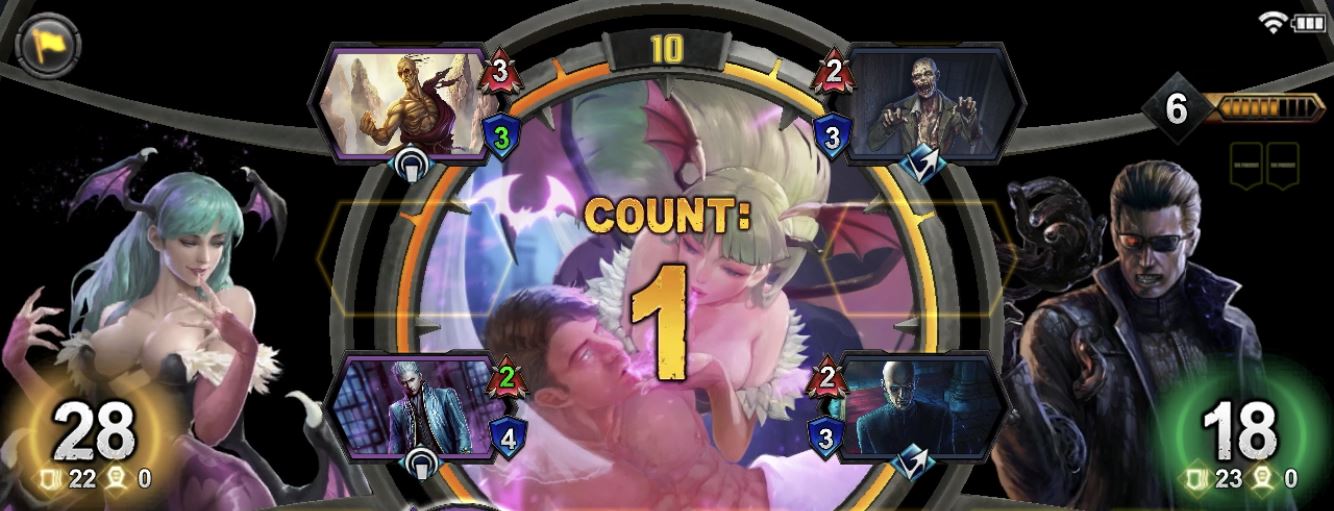
When playing as Morrigan Aensland, inflicting you’ll often inflict Halt onto enemies with action cards.
The ability Resonate makes units stronger when action cards are used, so they pair well with each other.
Resonate will be explained in detail when Dante’s basic deck is introduced, but when paired with Morrigan Aensland, you can inflict Halt while simultaneously powering up your units.
You can interfere with your opponent while powering up your units with Resonate, so it’s a good idea to get cards with Resonate and add them to your deck.
▼ Try Out the Hero Art Darkness Illusion!
You will need to fill your deck with unit and action cards that inflict Halt onto enemy units, but destroying all your opponent’s units at once is a very powerful effect.
Once you’ve used the basic deck and understood fully how Halt works, give Darkness Illusion a try.
5. Albert Wesker’s Basic Deck
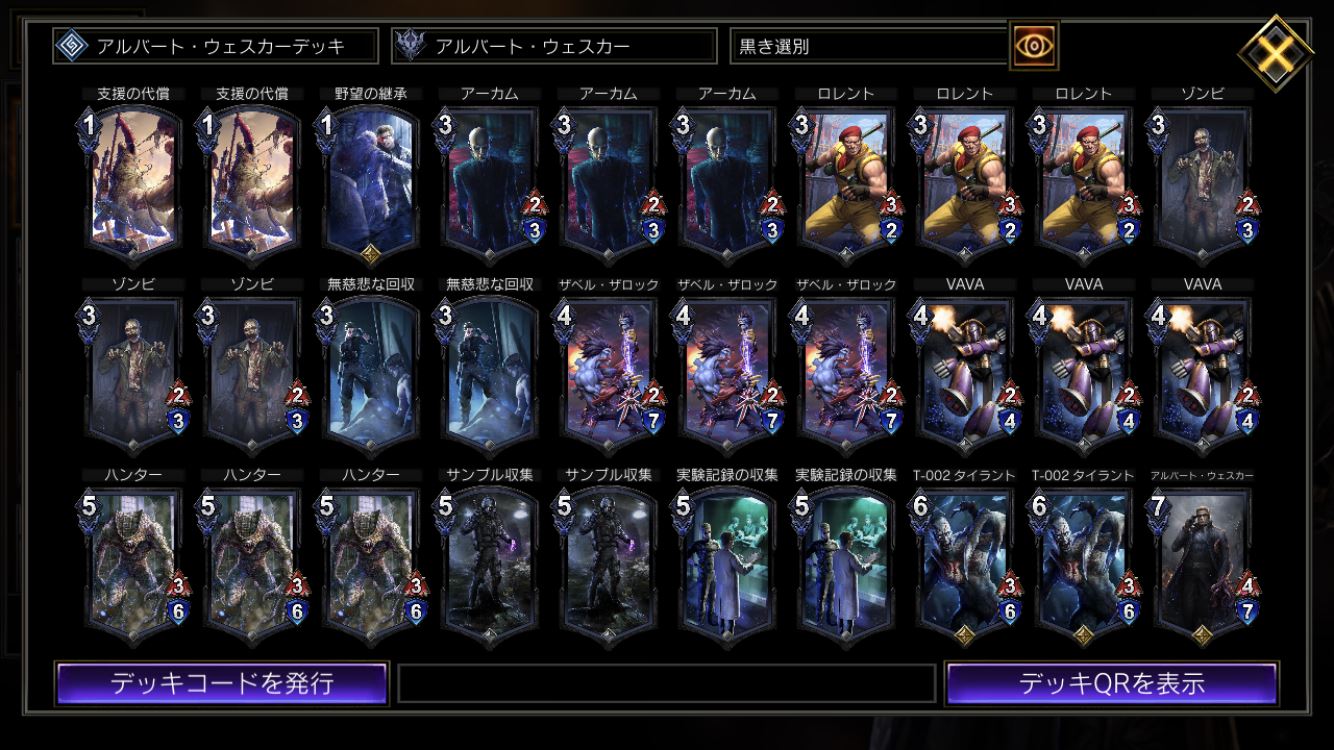
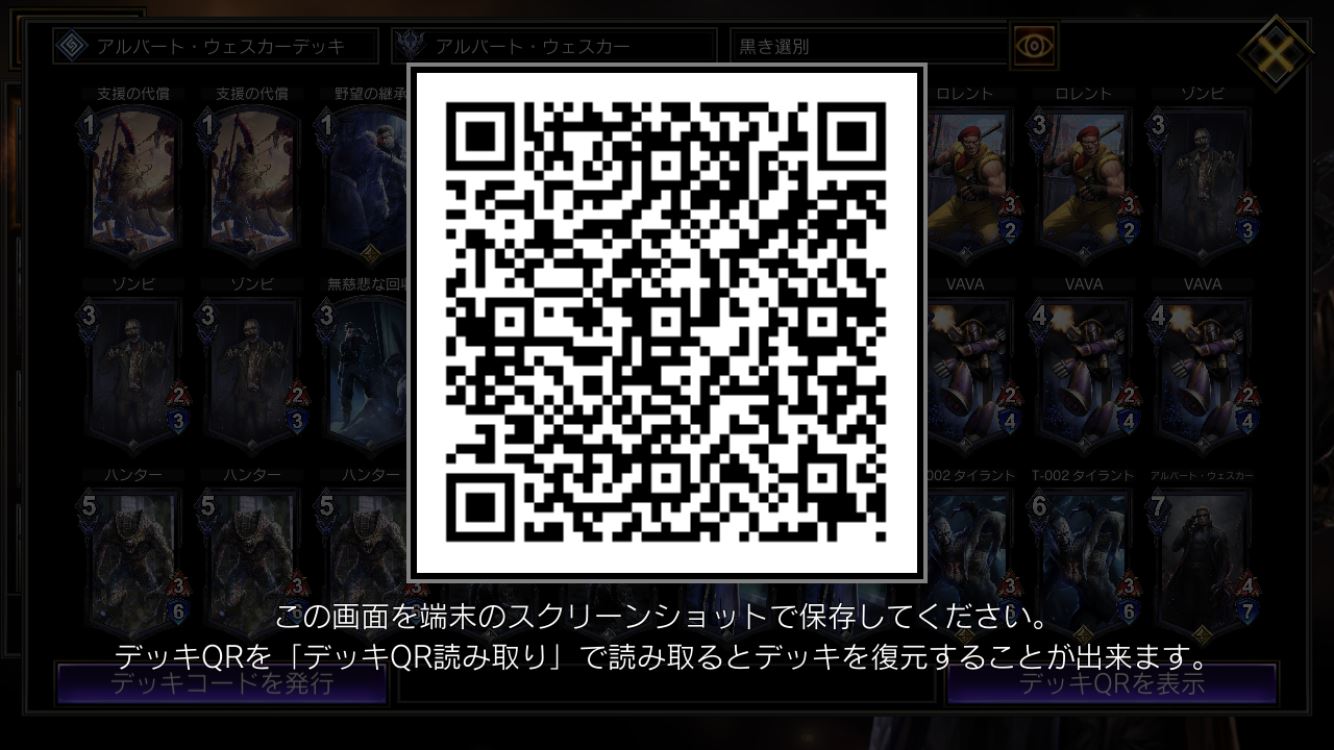
The Albert Wesker deck we’ll be using in this article is shown above along with its Deck QR.
Just like Morrigan Aensland’s, this deck exclusively uses Basic Cards, so all players can replicate it in-game simply by scanning the accompanying Deck QR.
It’s recommended that you take a few minutes to familiarize yourself with the cards in the deck and the details of Albert Wesker’s Hero Art before proceeding.
6. Albert Wesker’s Basic Play Style
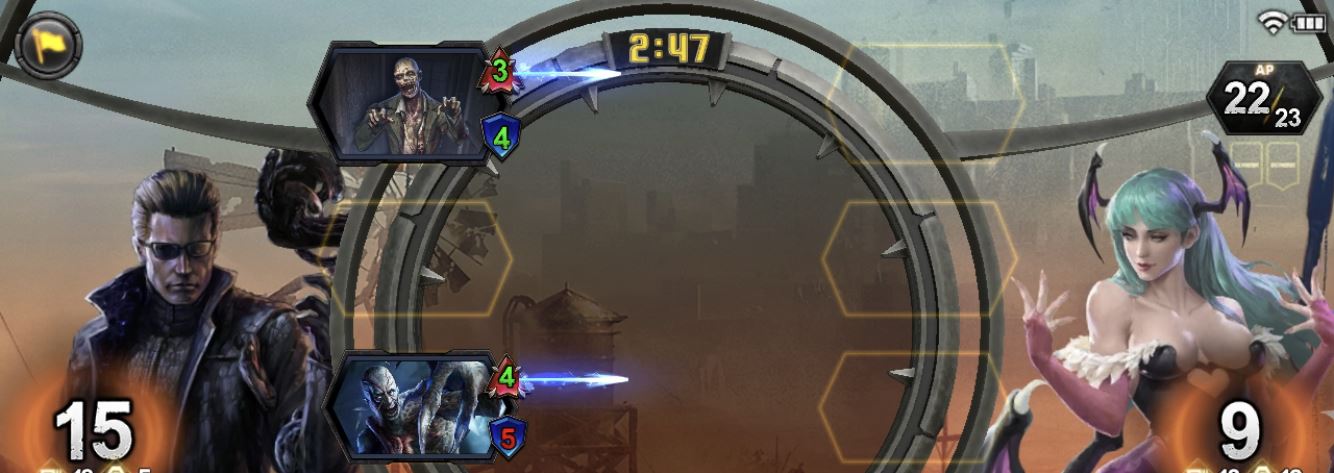
Albert Wesker is a hero that takes full control over his unit’s lives, and so his basic deck has many unit cards with the <Revenge> ability.
Normal units go to the graveyard when destroyed, but units with <Revenge> return to the deck more powerful than they were before.
Due to this effect, strong units begin to fill your deck when they are destroyed.
By aggressively playing units with <Revenge> during the early and mid-game, Albert Wesker is able to take over during the late game by overwhelming his opponent with enhanced units.
▼ Learn the ins and outs of <Revenge>!
The rules regarding when units with <Revenge> are destroyed are much different that the ones regarding normal units.
Let’s look at the following points.
- When defeated, goes back to your deck instead of the Graveyard, and cost is reduced to half
- (One time only) When returned to the deck, halved MP is rounded up.
- The unit will be powered up according to the values after <Revenge>.
- Units that have already triggered <Revenge> will not return to the deck and will go to the graveyard.
[Traits of Unit Cards with <Revenge>]
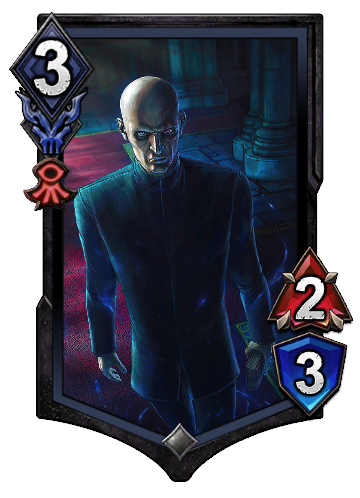
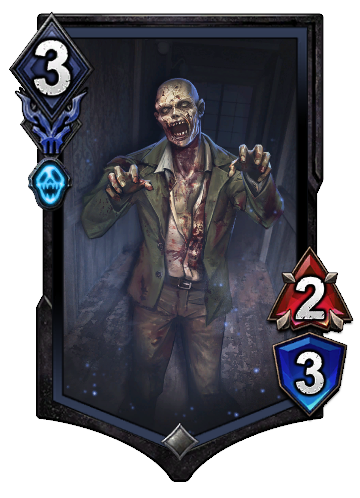
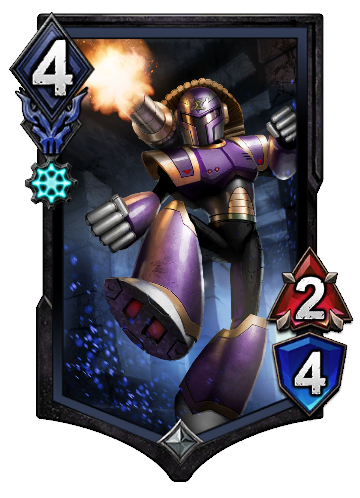
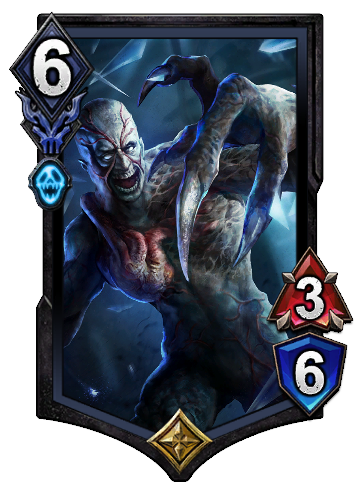
Cards like “Arkham (WESKER 001)” and “Zombie (WESKER 004)” are among the 4 kinds of cards with <Revenge> in this deck.
These units are quite strong after <Revenge> has triggered, but are weaker to similar cards of the same MP cost before <Revenge> triggers.
The early and mid-game stages will be tough for your units, so use action cards to help you get through it.
Furthermore, even though all units with <Revenge> have their MP costs reduced by half, the amount that their HP and Attack is boosted differs amongst them.
When <Revenge> triggers, “Arkham (WESKER 001)” will return with Attack and HP +2, and “Zombie (WESKER 004)” will return with Attack +1 and HP +3. These unique traits can be checked with the unit details page on the card.
Playing the Same Unit Again After <Revenge> Has Triggered
The mechanics of <Revenge> are a little hard to understand, so here’s an example with “Zombie (WESKER 004)”.
Let’s understand what happens after a unit is destroyed.
1. Once a unit with <Revenge> is destroyed, the MP cost is halved, and it returns to the deck with increased HP and Attack.
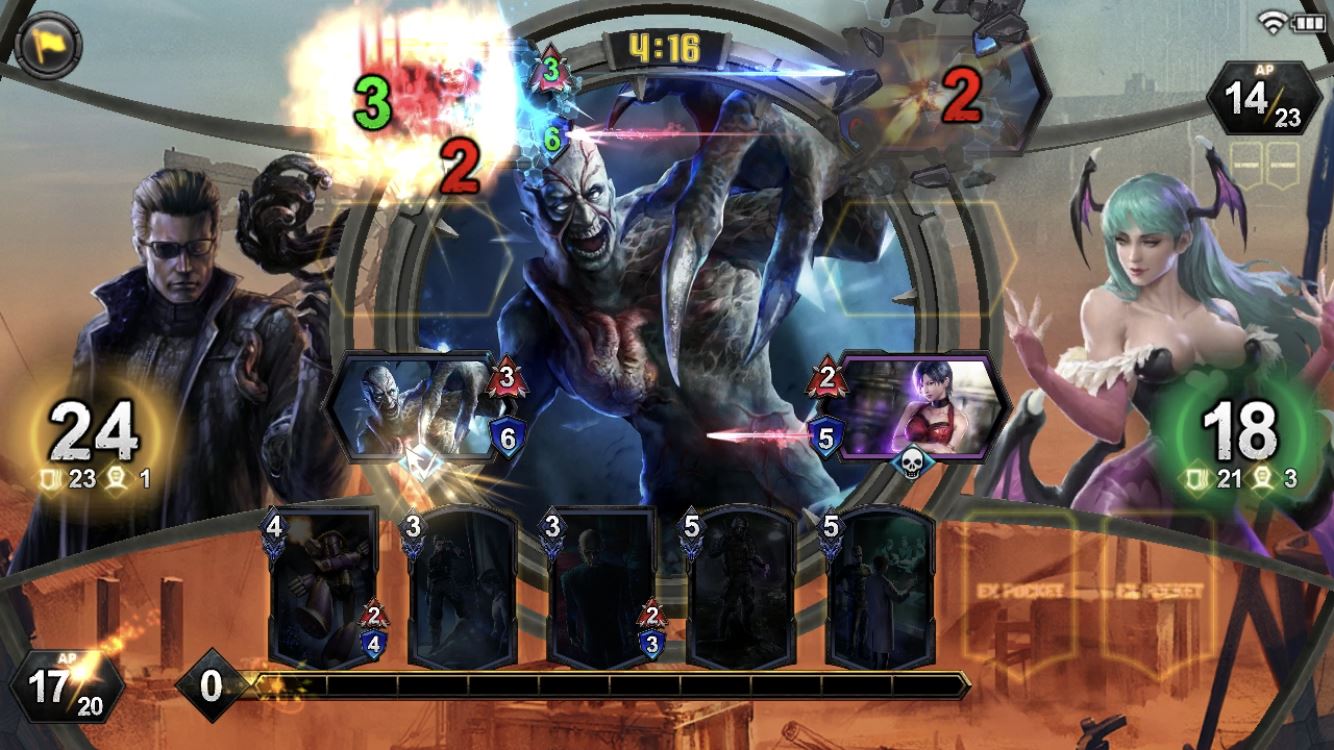

2. Units returned to the deck will be drawn with the same chance as other cards.
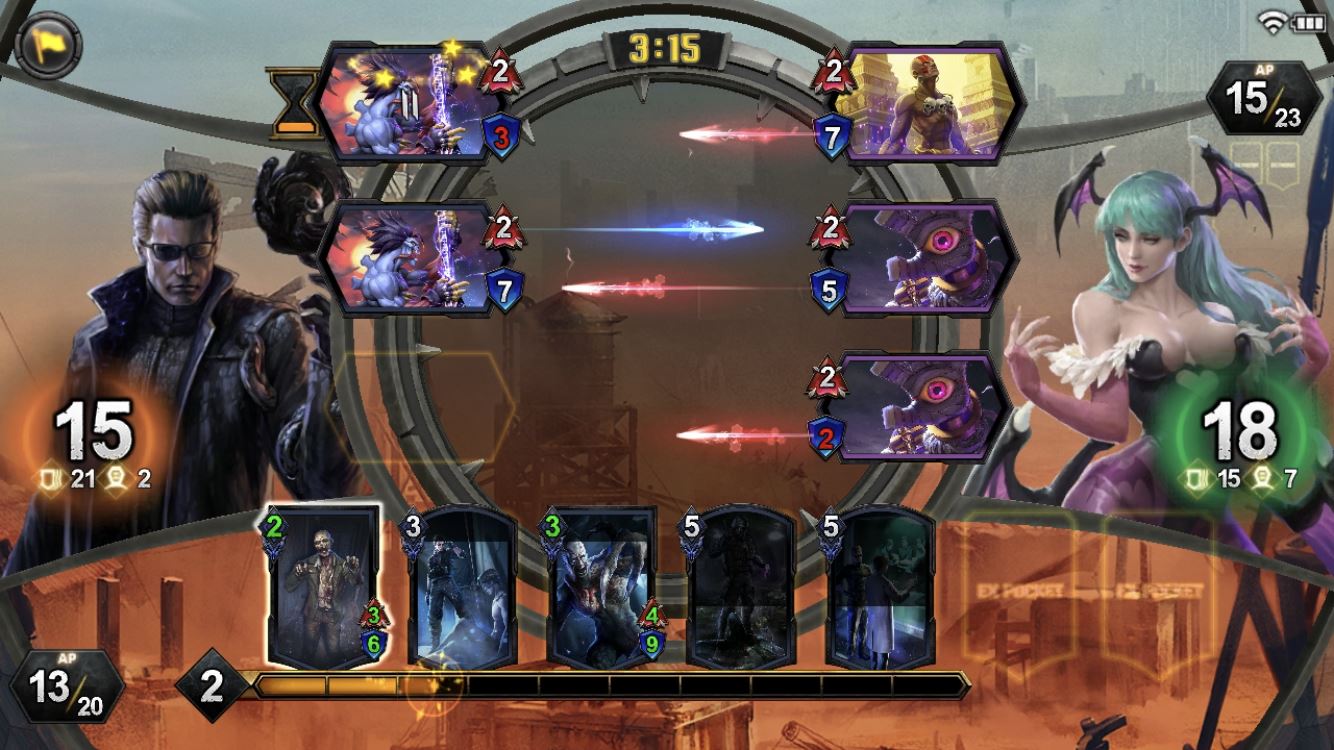

3. Play the unit card strengthened with <Revenge>.
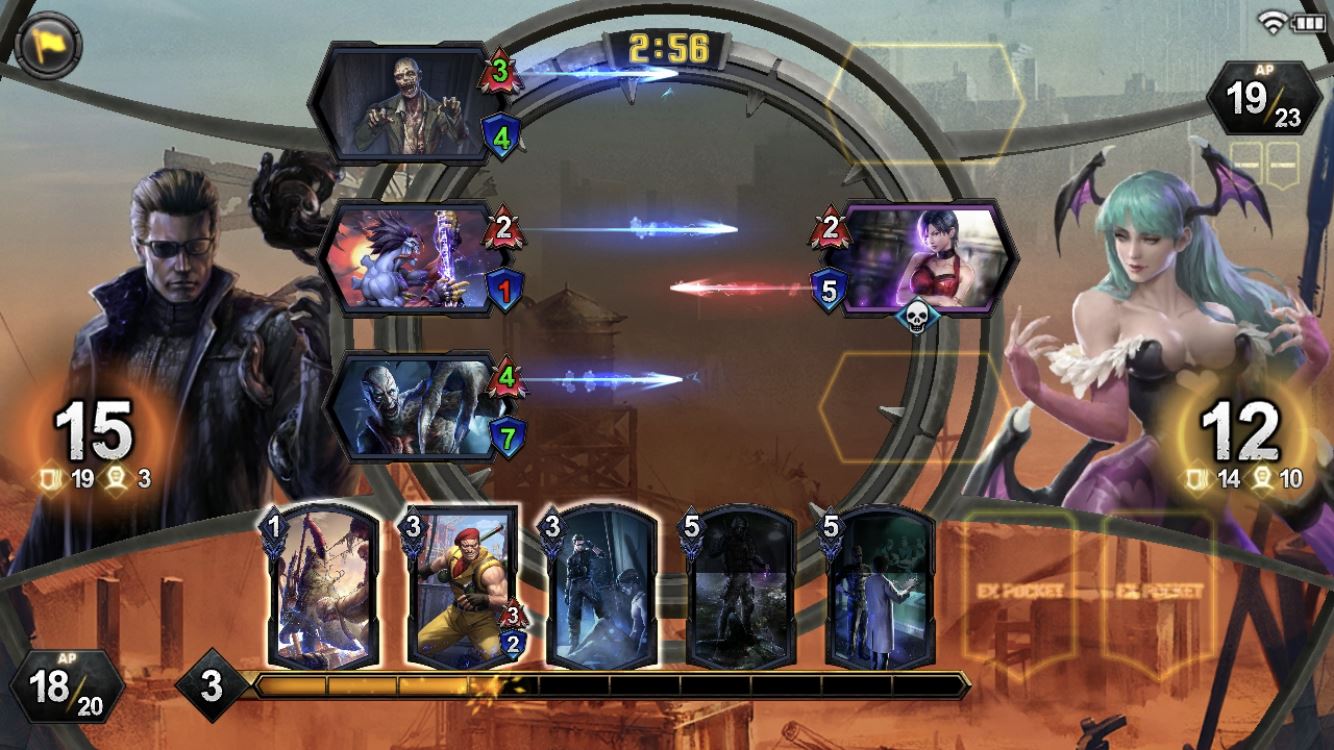
After <Revenge> triggers, “Zombie (WESKER 004)” becomes a powerful unit with high Attack and HP and an unbelievable MP cost of 2.
The effects of <Revenge> are quite strong, but be aware that drawing a unit that has returned to the deck is all up to luck.
There are action cards that can pull a unit with <Revenge> triggered from your deck, but those will be explained later on in [Traits of Action Cards that Add Units to Your EX Pocket From Your Deck Or Graveyard].
[Traits of Action Cards That Destroy Enemy Units]
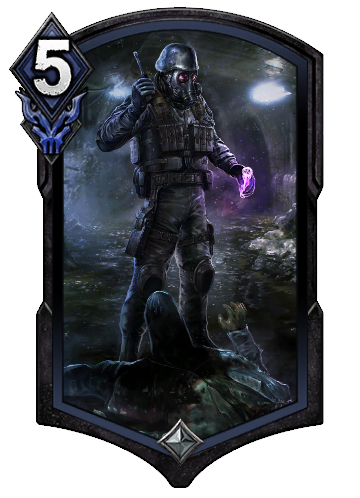
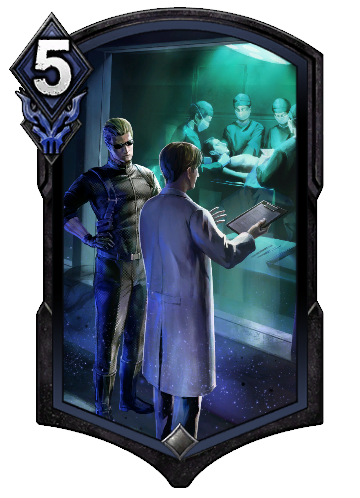
There are action cards in the basic deck that can instantly destroy enemy units.
Units with <Revenge> cannot handle strong units played by your opponent in the early game, so use these action cards until your units with <Revenge> are drawn again.
Whichever action cards you use, you’ll have to destroy one of your own units as a cost to play them. At first, they look hard to use, but you can ease the cost if you use units with <Revenge>.
Example of Using Action Cards with Demerits Effectively
When your opponent uses an action card to attempt to destroy your unit, you can use that unit as a cost to destroy an enemy unit.
Let’s look at this example to see how your opponent will destroy your units.
1. Your opponent plays an Action Card that will deal damage to your unit.
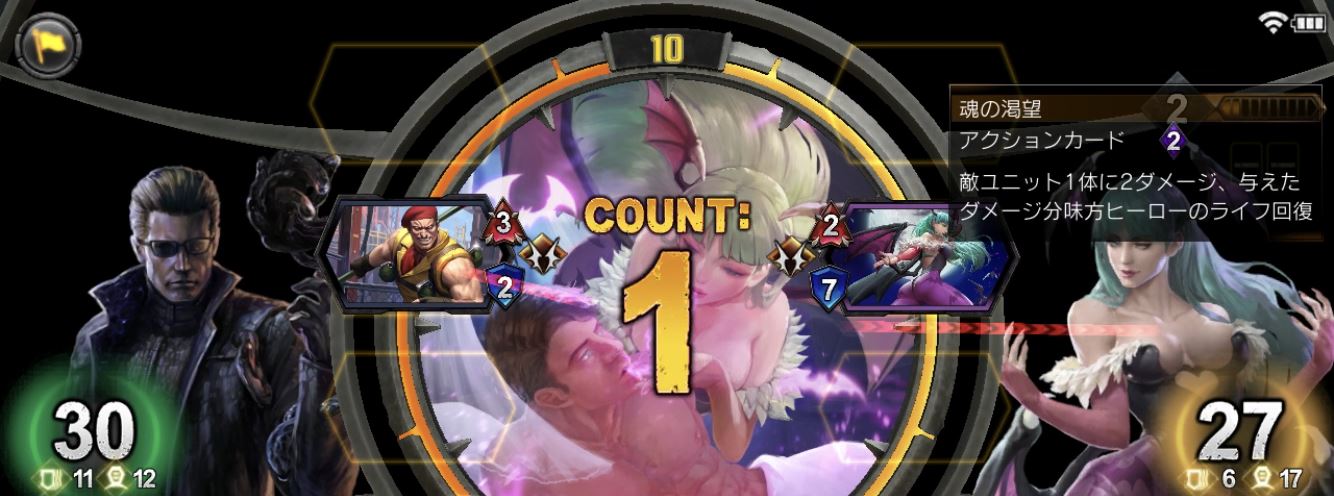

2. During Active Response, play “Experiment Records (WESKER 012)”.
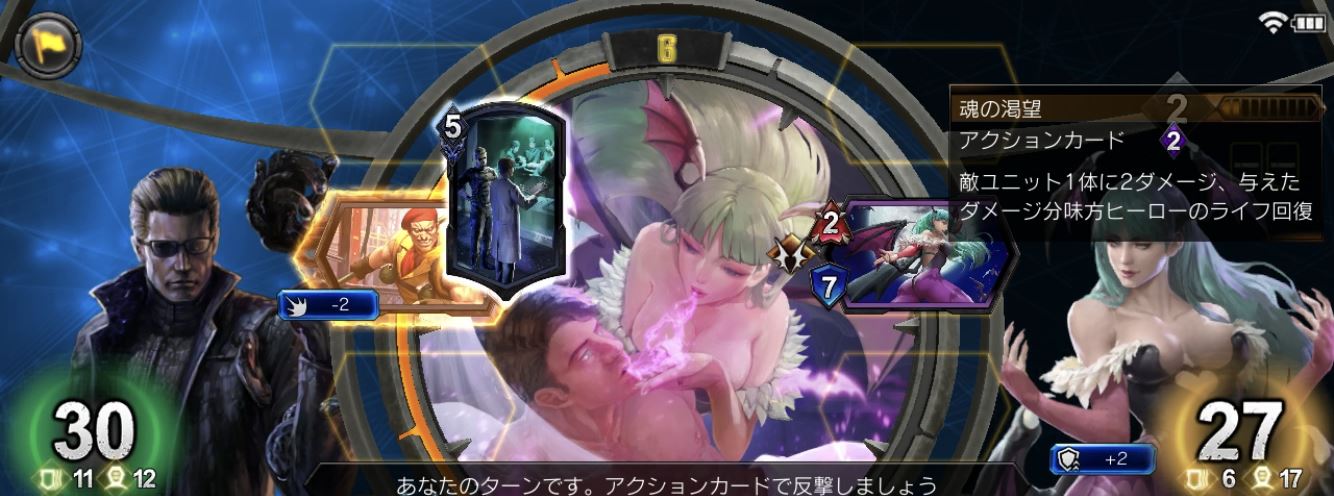

3. Destroy your own unit card, and make your opponent’s action card a wasted effort.

Like the example above, there’s no actual demerits to using a unit that was originally supposed to be destroyed anyways as a cost to play “Experiment Records (WESKER 012)”.
If there are no units in situations like the one mentioned above, then using units with <Revenge> as a cost is recommended.
Even if units with <Revenge> are destroyed, they’ll return to the deck and become stronger, so you can ease the demerits to using those action cards.
▼ The Hero Art Dark Destruction is Extremely Easy to Use!
It can only be used on units with MP cost of 5 or lower, but there’s no downsides to using it, so it’s quite powerful.
Using it in combination with the above action cards will allow you to get through the early game until you have your unit cards with <Revenge> triggered available.
[Traits of Action Cards that Add Units to Your EX Pocket From Your Deck Or Graveyard]
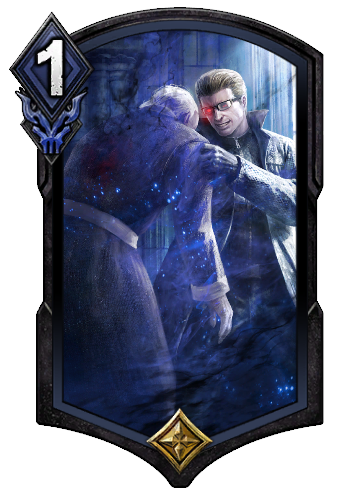
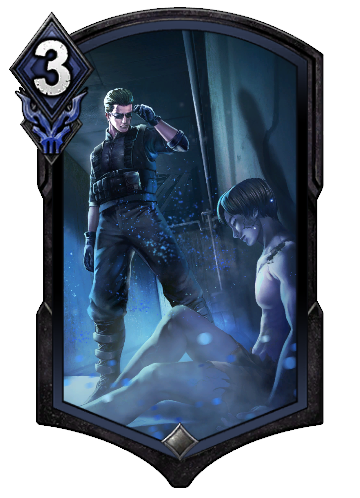
“Inheriting Ambition (WESKER 013)” can add <Revenge> triggered unit cards to your EX Pocket.
Normally, you aren’t able to control the timing of when those cards will return to your hand, but if you use this card you can add them to your hand at any time.
You can overcome the downside of <Revenge> with this card, so put it to good use.
“Ruthless Retrieval (WESKER 011)” also has a similar effect, but it adds a unit card in your graveyard to the EX Pocket, with Attack and HP +1.
It has a relatively high cost of 3 MP, so using it with the AMP gained during Active Response allows you to efficiently attack your opponent.
▼ What is the EX Pocket?
Normally, cards in your deck are added to your hand, but card effects can add cards to your EX Pocket.
By using the EX Pocket, you’ll be able to fight your opponent with more cards available to you.

7. Choosing Your Starting Hand (Albert Wesker)

When playing as Albert Wesker, the highest priority is to have units with <Revenge>.
If you don’t have any low-cost, easy to play cards such as “Arkham (WESKER 001)”, “Zombie (WESKER 004)”, or “Vile (WESKER 006)”, then you should swap.
Since the above <Revenge> cards do not have high Attack and HP before it triggers, it would help you to also have “Lord Raptor (WESKER 003)” or “Hunter (WESKER 005)” to help you get through the early game.
Other good cards to have would be at least one of either “Sample Collection (WESKER 009)” or “Experiment Records (WESKER 012)” to help deal with strong units your opponent plays during the early game.
8. A Tidbit of Advice to Win With Albert Wesker
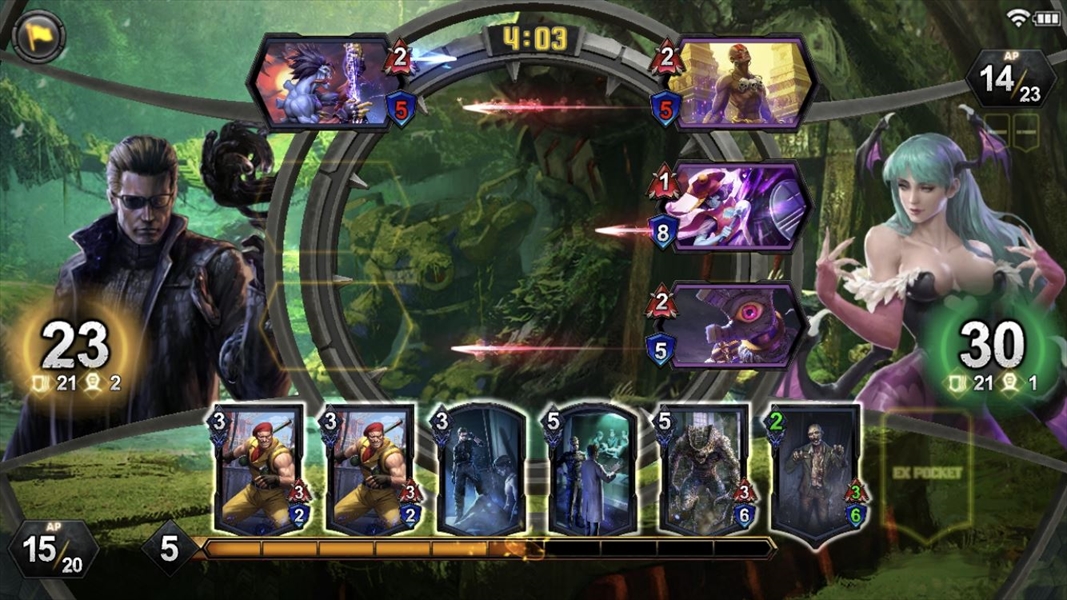
To gain victory with Albert Wesker, your goal is to last until your powered up <Revenge> units return to your hand.
From the early to mid-game, you may end up overwhelmed, and your hero’s Life might get drained too, but keep a cool head and fight on.
If you use action cards to destroy units, you’ll be able to buy time until your unit cards with <Revenge> return to your hand, and then you’ll be able to turn the tides in the late game in one go.
And since Wesker’s Hero Art Dark Destruction is extremely easy to use, you can use it to help you get through the early to mid-game that he struggles with.
It’s good to learn how to use his other Hero Arts as well, but it’s recommended that you use Dark Destruction until you get the feel for how Albert Wesker works.
▼ Hero Art Uroboros Calls Units From the Graveyard!
This Hero Art is most powerful when there’s a very strong high MP unit in the graveyard.
There’s an action card in his deck which allows you to forcefully put the highest MP unit card into the graveyard, so you can get the most out of this Hero art by using it in tandem with this action card.
▼ Bringer of Nightmares Pairs Well with <Revenge>!
It pairs really well with <Revenge>, so use it when you want to make the most out of those units.
In that case, you should add some cards to destroy your opponent’s units, as you will not have access to Dark Destruction.
Related Articles
*Details describe game features at the time of their implementation.
